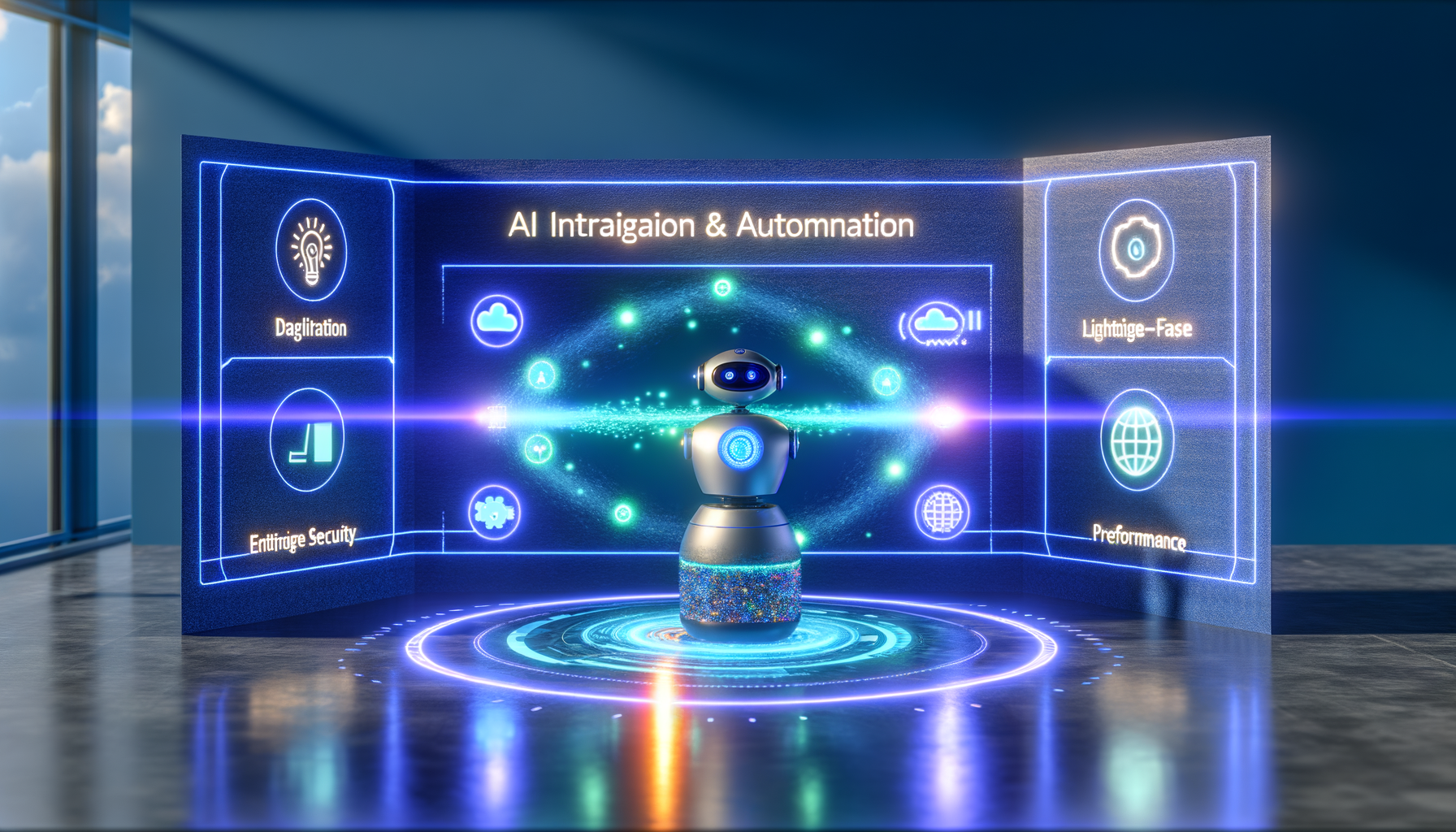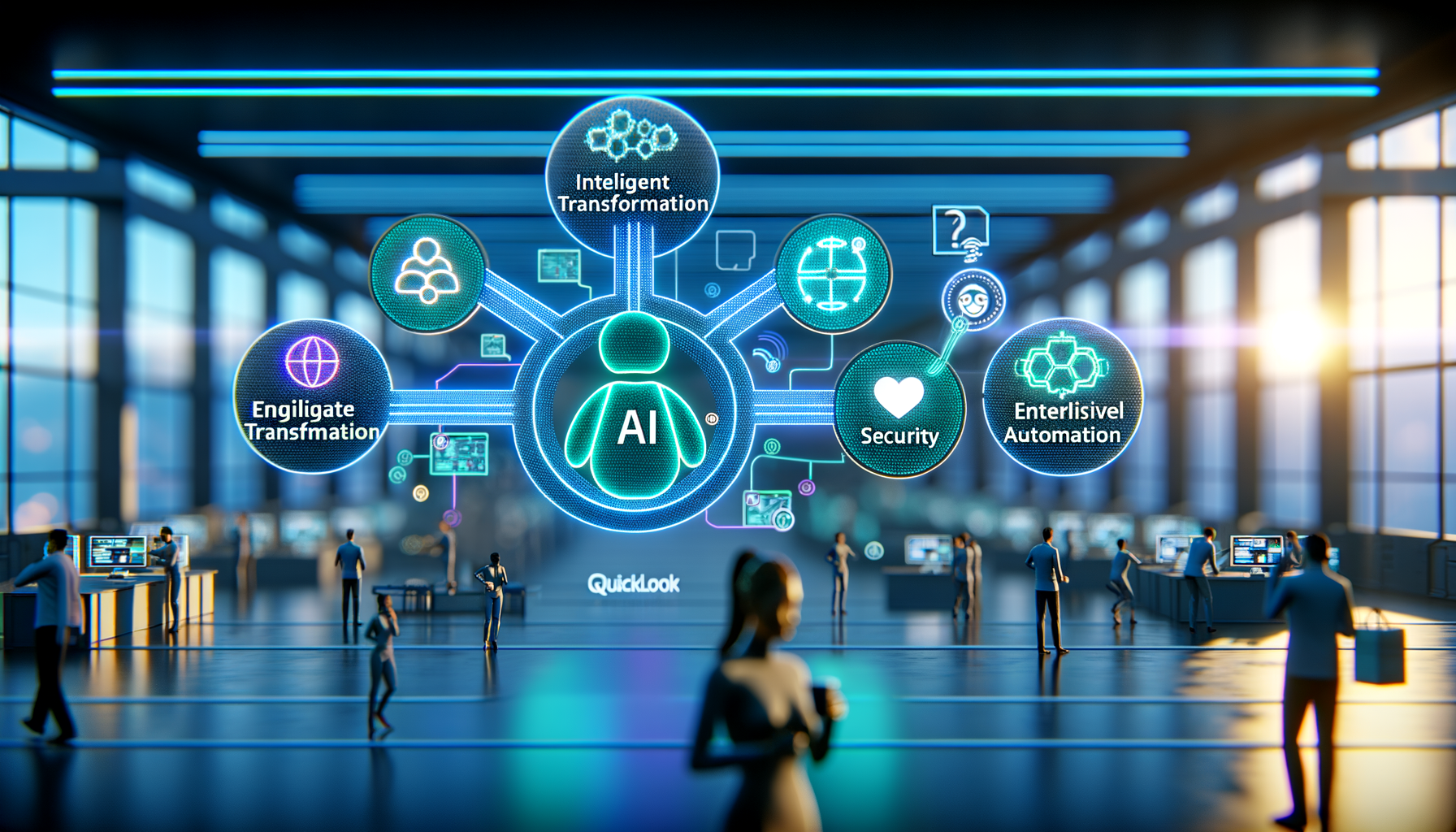In a world where AI integration is no longer optional, businesses must pivot or risk obsolescence. A staggering 70% of companies plan to adopt AI technologies by 2025 to stay competitive. This article unpacks how you can effectively harness intelligent automation, transforming your operations into a high-speed, high-efficiency machine.
Understanding AI Integration

AI integration concept with digital brain overlaying business operations
AI integration involves embedding artificial intelligence into your existing systems to automate processes, enhance decision-making, and improve customer experiences. It’s akin to giving your business a turbocharged engine.
With intelligent automation, repetitive tasks are streamlined, freeing up valuable human resources for strategic initiatives. Companies in the Pacific Northwest have been pioneers in leveraging these technologies, setting benchmarks nationwide.
However, successful integration requires a nuanced understanding of both the technology and the business needs it serves.
LIST
- •Enhance decision-making
- •Automate repetitive tasks
- •Improve customer interaction
Steps to Implement Intelligent Automation
A Strategic Guide

Flowchart showing steps to implement intelligent automation
Step 1: Identify the processes ripe for automation. Look for repetitive, time-consuming tasks—an AI's bread and butter.
Step 2: Choose the right technology. From chatbots to AI-driven analytics, select tools that align with your strategic goals.
Step 3: Pilot and scale. Test your AI solutions on a small scale to gather data and refine your approach before full deployment.
CALLOUT
Did you know? Businesses using AI see a 40% increase in operational efficiency.
Case Study: Successful AI Deployment

Chatbot interacting with customers on a digital platform
One of our clients, a mid-sized eCommerce platform, faced bottlenecks in customer service. By integrating AI chatbots, they reduced response times by 60%, enhancing customer satisfaction.
The chatbot deployment also allowed their human agents to focus on complex queries, further boosting productivity and morale.
This real-world application of AI showcases how intelligent automation can drive tangible business outcomes, a hallmark of Quicklook's approach.
QUOTE
AI integration transformed our customer service operations, cutting response times by 60%.
Challenges and Solutions

Diagram of AI integration challenges and solutions
Implementing AI is not without its pitfalls. Common challenges include data privacy concerns, integration with legacy systems, and ensuring ethical AI use.
To address these, companies can adopt a phased approach, ensuring that data governance frameworks are in place from the outset.
Collaboration with experienced partners like Quicklook ensures that AI integration is both effective and secure, leveraging our enterprise-grade solutions.
LIST
- •Data privacy
- •Legacy system integration
- •Ethical AI use
Future of AI in Business

Futuristic office with AI agents collaborating with human workers
The future is bright for AI, with technologies like agentic AI transforming workplace collaboration and productivity. This involves AI agents working alongside humans, offering real-time insights and automated decision-making support.
Businesses that embrace AI today are not just optimizing for now—they're future-proofing their operations. The potential for innovation is vast, and the first movers will set the standards for their industries.
As AI continues to evolve, so will the opportunities for those prepared to harness its full power.
CALLOUT
Get ahead of the curve: AI isn't just a tool, it's a transformative strategy.
Frequently Asked Questions
QHow can businesses effectively implement hyperautomation to enhance operational efficiency?
QWhat are the key considerations for integrating AI-driven decision-making processes in organizations?
QHow does agentic AI transform workplace collaboration and productivity?
Conclusion
To stay competitive, businesses must embrace AI integration and intelligent automation. From enhancing decision-making to optimizing operations, these technologies offer substantial benefits.
Future Vision
The future belongs to those who innovate with AI today. Don’t just keep up—lead the charge.
Schedule your AI audit with Quicklook.
